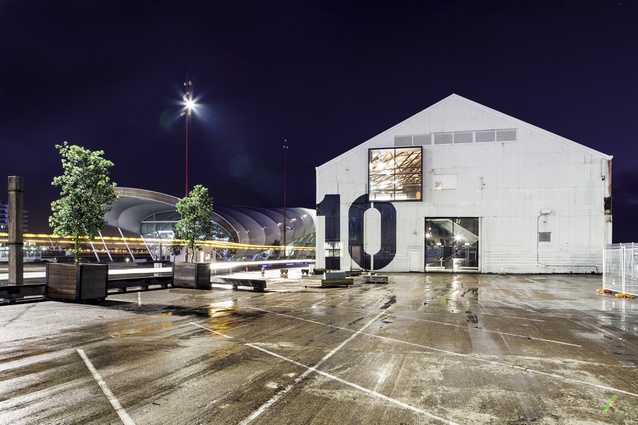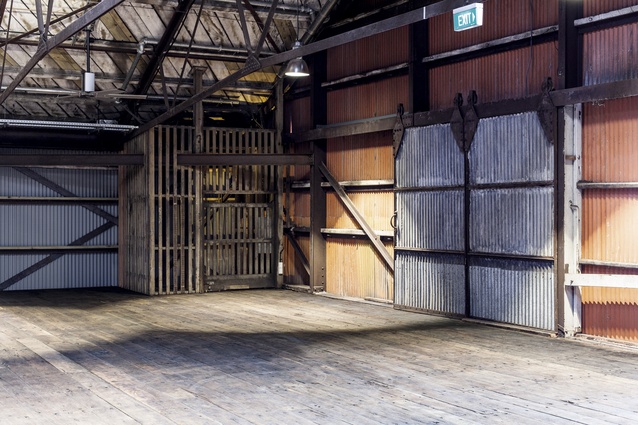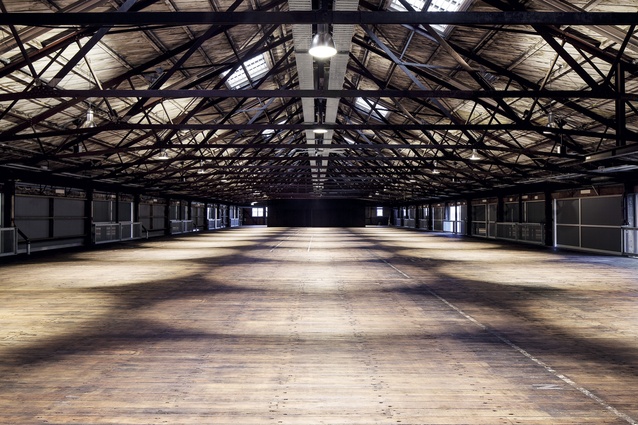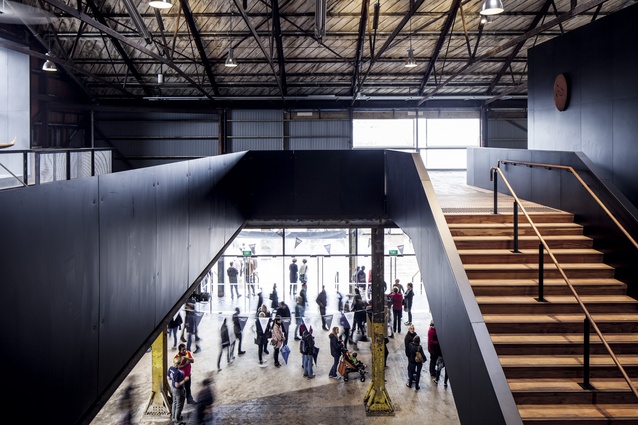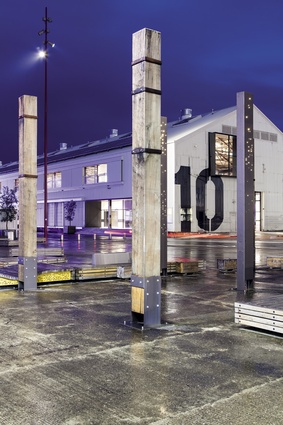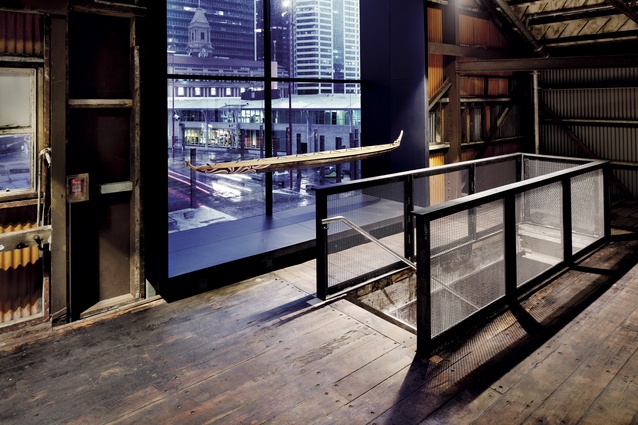Shed 10
Time to celebrate a heritage survivor! Shed 10, one of the last remaining original industrial buildings on Auckland’s waterfront, has been brought back to life, to the delight of ‘most’ of the architectural community, some of whom fought hard to retain it. And, given the number of New Zealand heritage buildings that have fallen by the wayside in recent years, now seems like the perfect moment to open one of those unused bottles of bubbly left over from the Americas Cup and christen Shed 10’s bow. I first took notice of Shed 10 after I returned from living overseas around the time of the 2011 Rugby World Cup and I didn’t quite understand what all the fuss was about. Keep an old corrugated iron shed – why, when you could have a sparkly new number, fit for purpose, yadda yadda?
It wasn’t until I toured the building that the penny dropped. Walk inside Shed 10 and you realise that it plays a vital part in helping us to understand Auckland’s waterfront history as an important trading port, both before and after European settlement. Never mind the design attributes: the steel roof trusses, the diagonally placed sarked timber ceiling, the scuffed painted names of former cargo companies on the chunky matai flooring, etc. These days, restaurants in Britomart pay someone serious money to recreate a high-quality patina like this.
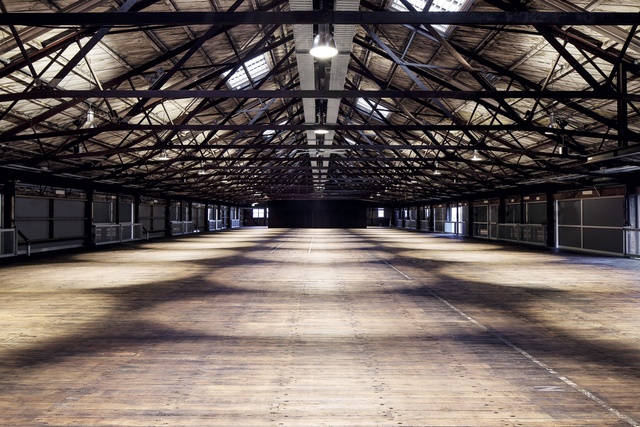
Over its 100-year-long lifetime, Shed 10 and its site on Queens Wharf have developed a very real and rich cultural, social AND political patina: farewelling troops leaving to fight in the First World War, hosting British royal visits, at the centre of the 1951 waterfront dispute – one of the lengthiest and costliest industrial disputes in New Zealand history – and as a ‘party zone’ venue for the 2011 Rugby World Cup. Not to forget that Queens Wharf hosted one of Auckland’s most famous and controversial architectural competitions and the ensuing debate around the hopes and dreams of a city.
Once upon a time, Shed 10 was a proper industrial building – 4,800m2 and designed to process cargo – with four other warehouses on the wharf, all constructed between 1909 and 1913; three were double-storeyed and one was single. Three sheds were removed back in the 1980s and the other remaining shed ‘11’ was dismantled to make way for the Cloud.
The single-span, single-storeyed Shed 11 had a slightly smaller footprint than does Shed 10 and is currently being held in storage somewhere, waiting for a rebirth.
When, in the 1970s, shipping evolved to become more containerised, Shed 10’s role moved from cargo processing and warehouse storage to the checking of imported cars, then biosecurity checks and, intermittently, as a secondary cruise ship terminal (on the ground floor, at least, because you had to be careful where you stood on the upper floors; the building had fallen into a really poor state of repair). It is currently owned by the Government but it is anticipated that it will be handed over to Auckland City in due course; it is already looked after by Waterfront Auckland.
Today, Shed 10’s new role, aside from hosting heaving crowds for televised events like the America’s Cup, is to continue its working status as Auckland’s primary cruise ship terminal. But do Aucklanders really care about being the number one cruise destination in the world? Most likely not. But the economic reality is that Shed 10 will welcome in the region of 100 cruise ships each year, adding around $114.9 million GDP into the region’s economy annually (2012/2013 statistics) and, as we know, money talks. The building can process up to 3,000 passengers – double the size of the existing facility on Princes Wharf – and receive ships for about 80 days of the cruise season. On the remaining days of the year, it’s being used as a dry hire event space for a maximum of about 1,500 people for cocktails on the first floor and 2,500 concert-goers on the ground floor.
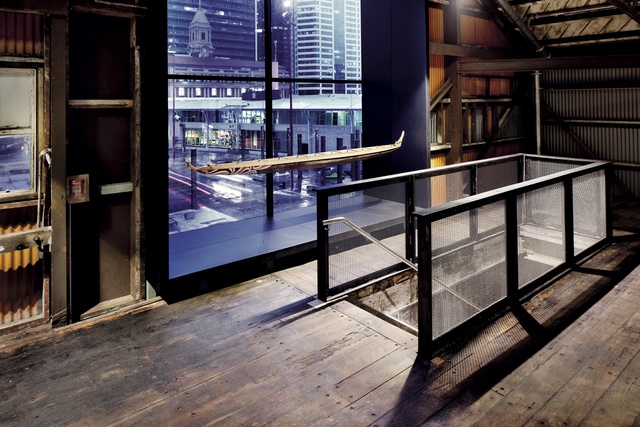
In ‘cruise mode’, the first floor will act as the passenger lounge, including a processing area, a waiting area and a ‘customs-controlled’ space, while the ground floor is being used for passenger luggage, security and border agency processing. All of this is designed around portable cruise infrastructure (ticket counters, security scanners and the like), adaptable to Shed 10’s open-plan spaces so they can be added or removed easily each season.
During the design process, a key concern was the effect of an architectural intervention on the character and integrity of this Category 1 Historic Place; however, Jasmax, working with the New Zealand Historic Places Trust and conservation heritage advisors Salmond Reed Architects, has sensitively and successfully minimised any major negative impacts despite, no doubt, a few wrangles along the way. Matthew Glubb, Jasmax’s lead architect on the project, describes the team’s approach as “a light touch” intervention, retaining and preserving as many of the original heritage features as possible, along with the spatial character, and the existing form and fabric of the shed.
“Waterfront Auckland now organises a lot of free public events here,” says Glubb. “People are realising the important role Shed 10 plays in Auckland in terms of helping us understand the social, cultural and architectural history of the waterfront.” Salmond Reed Architects’ Bruce Petry adds, “Much of the time we focus on the heritage projects that seem important, like the Art Gallery or the Town Hall, for example, but what is often interesting and more important, take a utilitarian structure like the Shed for instance, are the stories that go with them. They have an equal heritage value because they are often explicitly layered with stories and habitation that enable us to discover a more-tangible window to the past, telling the stories of ordinary New Zealanders: when things are not cleaned up.”
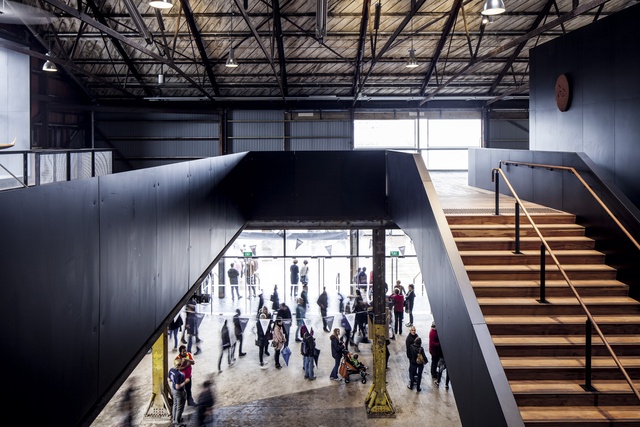
Materials and items were salvaged and many have been reused or are being held in storage. Detailed documentation was applied during the heritage archival process and it is hoped that some of the stored heritage items will be exhibited in Shed 10. The building still feels quite rough around the edges and it’s now hard to imagine the scale of the work involved in making the building habitable.
The contemporary interventions differentiate old and new, including two circulation and service cores, one at the south and one at the north end of the shed; these enable large and flexible open spaces throughout and ensure the old timber floors, steel columns, exposed steel trusses and timber sarked ceiling hold court. Both cores float free of the existing structure and fabric. New bay windows, added into the north and south ends of the building, connect the sea and the city. The main entry, off Queens Wharf’s central street, is a recessed veranda – the negative of the bay windows. Large sliding windows and movable walls allow a gangway to join up with a cruise ship anywhere along the length of the building.
Shed 10 was planned as a sustainable role model for Auckland; elements include photovoltaics on the roof (analysis is publicly available online), along with 100 per cent natural ventilation, 100 per cent daylighting of the first floor and rain water harvesting. The building aims for net zero energy consumption and the architects believe it will come close.
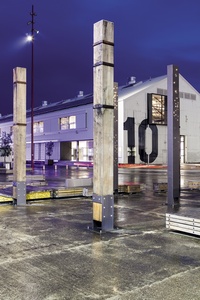
Bernard Makoare, Will Ngakuru, Andrea Hopkins and Amorangi Hikuroa have created artworks for Shed 10, each speaking of the Auckland isthmus and beyond. Key strands connect the works: the sea, seafaring, encounters of people with people, and encounters of people with the environment, relating to the Maori belief that it is very important to welcome your guest generously and warmly, and to honour them with descriptions of the ancestral landscape.
“We highlighted some fundamental principles that… may speak to all cultures in one way or another,” says Makoare, paying tribute to the past, present and future: “The qualities of unity, cohesion, tolerance, as well as the challenge and embrace of change… are all considerations of a fledgling settlement, both from the point of view of the settlers and the perspective of those already here. This follows the thinking of the Maori leaders like Apihai Te Kawau who, although anxious about settlement at that time, also… welcomed new ideas, technologies and opportunities brought by new peoples. The same anxieties and aspirations can still be expressed now, I think.”
As to the future of Queens Wharf? The Cloud is still proving to be a well-used event space but its long-term future is anyone’s guess. Personally, I’d like to see Shed 11 brought back as an indoor working market like Spitalfields, Greenwich or Borough Markets in London; the historic space would lend it a great energy. Lively activities and creativity would activate the waterfront, with up-and-coming designers, small food producers, cafés, music and performance creating a place for everybody to enjoy – tourists, locals and out-of-towners – drawing more people into the city.
Makoare is bang on: projects like Shed 10 are catalysts for change. And, inevitably, change draws all kinds of anxieties and challenges to the surface, especially in multi-stakeholder public projects. In the current climate, earthquake regulations are putting additional pressure on the retention of our heritage buildings but we have to tackle our fears head on with more debate. As Glubb suggests, “We need to think quite hard about what is acceptable for us to apply to historic buildings to allow them to survive. There needs to be a rethinking of that balance.”

